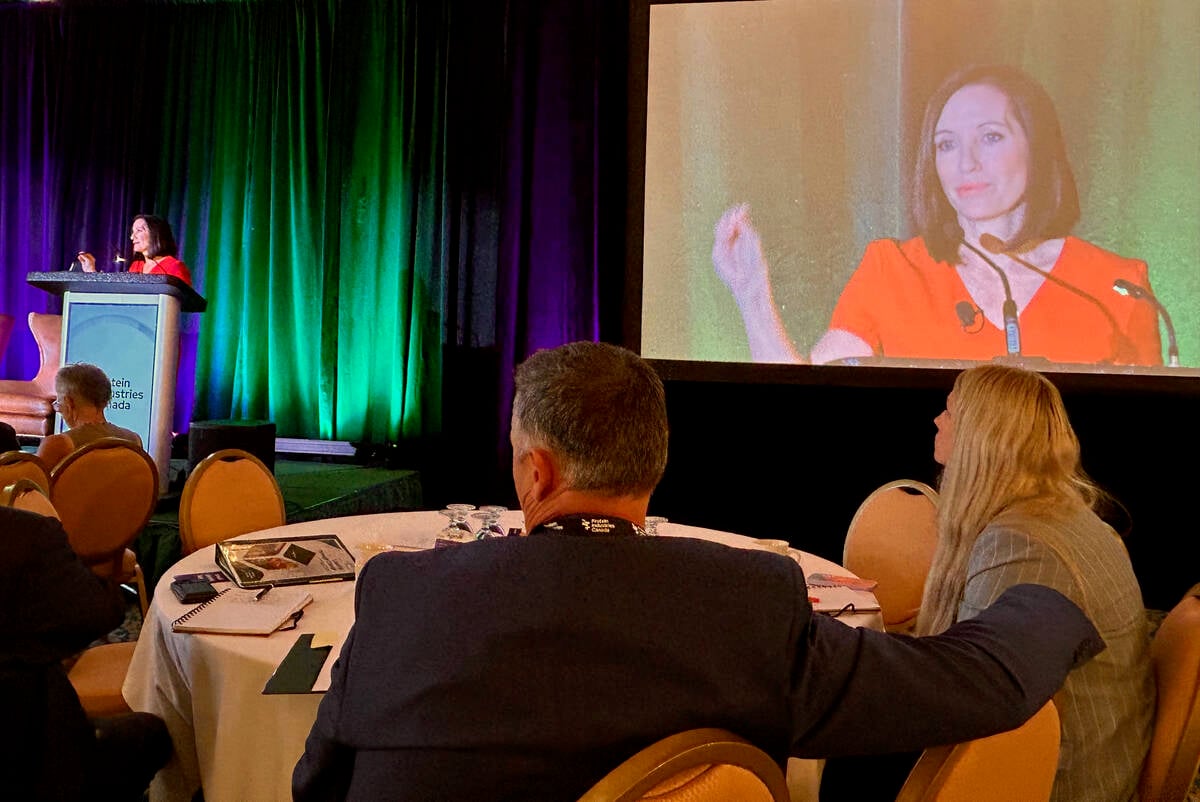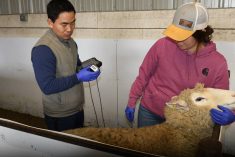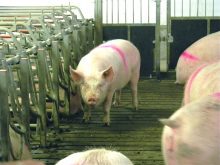Beef industry told new technology is ushering in a new era that will require farm managers to be strategically disruptive
You may run a great beef operation, but how do you make yourself remarkable?
That’s likely not a question most ranchers ask themselves, but according to a technology expert who spoke to the recent Alberta Beef Industry Conference, it is the type of question and thinking that must be asked today in light of explosive artificial intelligence (AI) technology.
Shawn Kanungo, a globally recognized innovation strategist based in Edmonton, said maintaining the status quo isn’t going to cut it anymore.
As part of a new business strategy, producers need to ask themselves “what is our bold ambition?” and “how do we become remarkably different, a freak, or unique? How do we go from being good to being remarkable?”
Read Also

Canada told trade crisis solutions in its hands
Canadians and Canadian exporters need to accept that the old rules of trade are over, and open access to the U.S. market may also be over, says the chief financial correspondent for CTV News.
It is not just about thinking outside the box anymore. It is about being bold and innovative and trying ideas that make you feel uncomfortable, says Kanungo.
“Get up every day and ask yourself, ‘what can I do today to get myself fired?’”
Bold, innovative ideas and approaches can take an operation from being good to being remarkable.
Kanungo wasn’t able to provide a step-by-step program for becoming remarkable during his fast paced, hour-long presentation, but he says it starts by embracing artificial intelligence or at least being open to the fact that it is here and “start playing around with it. It is here to stay. In the future there will be two types of leaders. There will be leaders who leverage AI in their business, and those who don’t will be leaders who are irrelevant,” he says.
Kanungo opened by painting a compelling picture of how powerful and useful AI technology can be. He talked, for example, about the power of ChatGPT, an artificial intelligence app launched less than two years ago.
A chatbot developed by OpenAI based on a large language model, Chat GPT can answer a wide range of questions and provide cohesive explanations on various topics. Give it a few clues and it can write an article, essay or email. It also has analytical features.
As a demonstration ahead of the conference, Kanungo fed a 100,000 line Excel document with statistics on global meat consumption into ChatGPT. Then he asked the app to produce information relevant to Canadian and Alberta beef producers.
It produced a list of facts on what countries produce the most meat, which meats were the most popular and much more.
“I put a 100,000 line document into ChatGPT and it cooked that information to come up with a summary of these facts. It is incredible,” says Kanungo.
He also talked about text to video technology, a sophisticated AI-driven process that translates written text into video content.
He demonstrated AI language technology that could use his image but convert his speech into any language in the world, showing that anyone can easily connect with world customers in their language. He described how a marketing project he worked on a few years ago, which required hundreds of hours and thousands of dollars, could now be produced in a few minutes.
“With AI technology, a 10-year-old boy anywhere in rural Alberta with a computer could create this in seconds,” says Kanungo. “AI is reimagining how we look at work.”
More people in the world have access to generative AI technology on their smart phones than have access to clean water and toilets, he said. About 85 per cent, or 6.92 billion people, have smartphones, while 75 per cent, or six billion, have access to clean water and only 55 per cent, or 4.5 billion, have decent sanitation.
Where does this connect with agriculture?
In a visit to Titan Land and Cattle Company at Niton Junction, west of Edmonton, Kanungo says he learned a lot about the beef industry, but more specifically he says “the beef industry is about people and cattle, but it is also an industry about data.”
From Kelly Armstrong at Titan, Kanungo learned there is a great deal of data collected on each animal related to health care, rate of gain and cost of gain.
“This industry is all about analyzing data to optimize efficiency and that is exactly what AI technology is designed to do.”
To attract and keep young people involved in the agriculture industry, it is important to make use of new technology, he says.
“How do we show young people (by working in agriculture) they can improve their status?”
And by status, he means showing them how they can be valued and improve or appreciate their self worth. That involves encouragement to use new technology, be innovative and be creative, sometimes allowing this new thinking to be disruptive. An uncomfortable but important characteristics of being a good leader is stepping aside, and saying “I don’t know” and asking others for help, Kanungo says.
“Being a good leader today — being disruptive — is not about thinking. It is about acting.
“Use the technology. It is about deliberately and consciously exposing yourself to challenges. It’s about waking up every day and asking, ‘how do I make use of that AI technology that guy was talking about?’
“It is about sending that moonshot email to that client you’ve been waiting to work with … It is about waking up every day and not worrying about whether you look like a joke today. The most dangerous person in the room is the one who is the most afraid but bold enough to move forward.”
Kanungo is the author of a best selling book, The Bold Ones.















